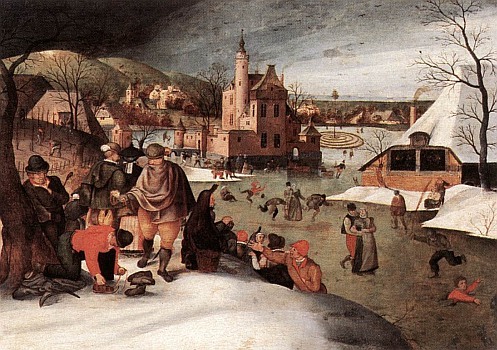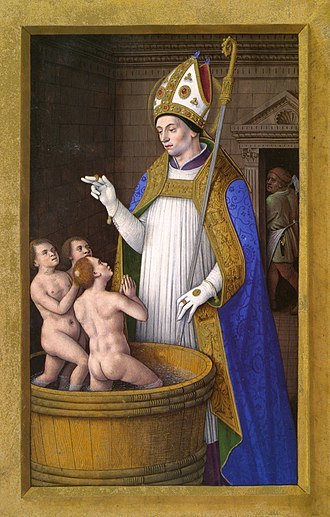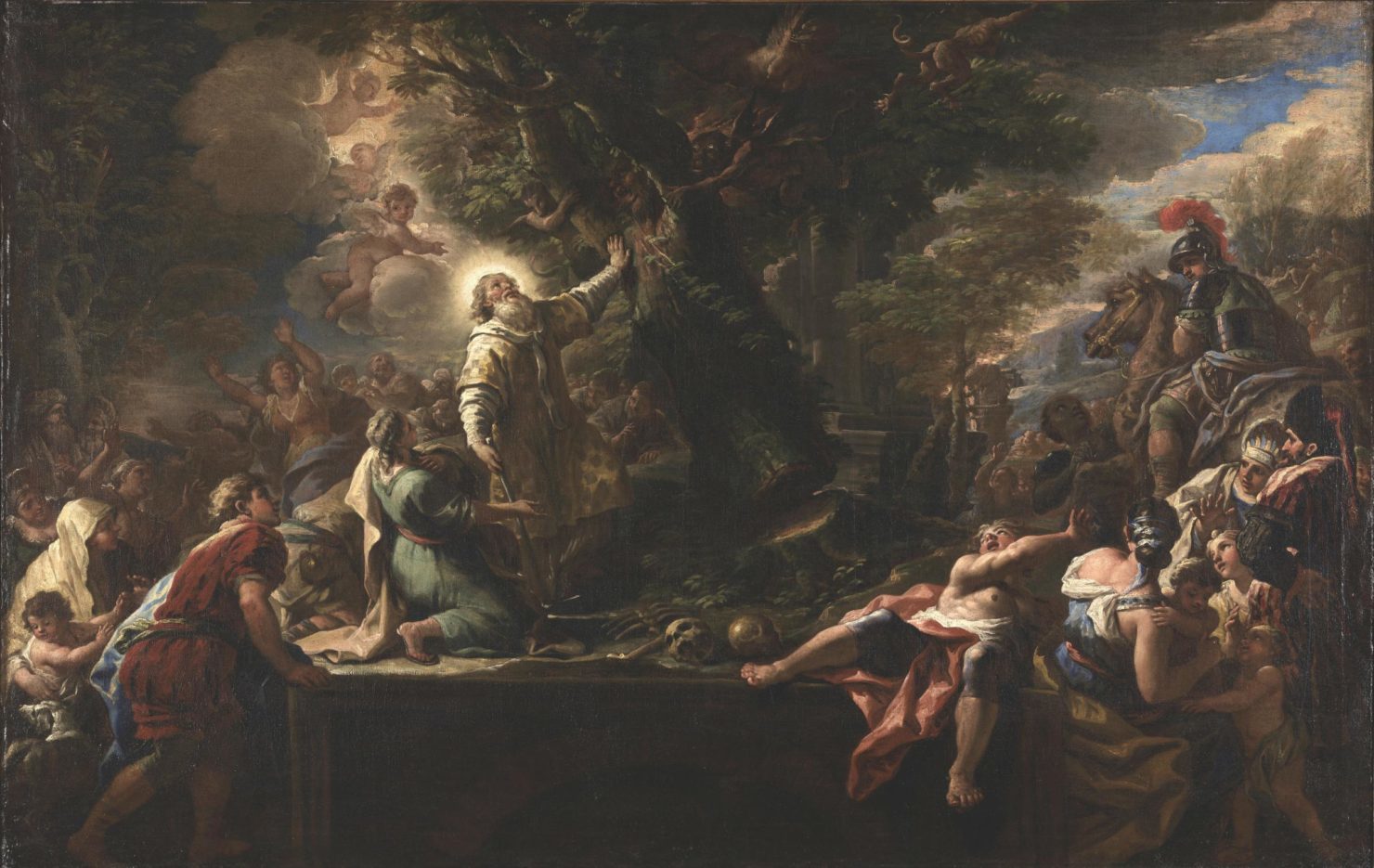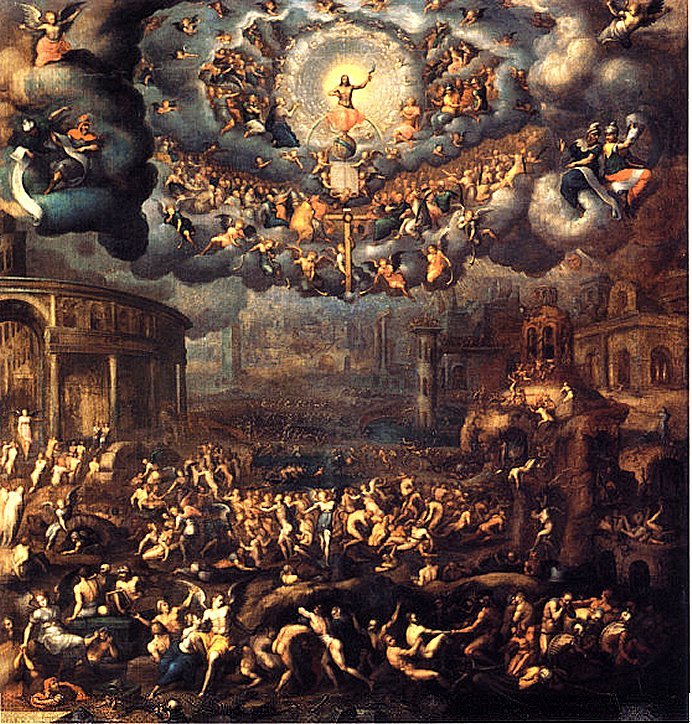
Ember Days
Of all of the neglected traditions of Christendom the Ember Days are among those most worthy of a revival. The Ember Days are a sequence of four three-day fasts, falling roughly around the beginning of each of the four seasons. Today marks the start of the Winter Embertide. Fasting is practiced on Wednesday, Friday and Saturday of this week.
It's very interesting to look at the reasons traditionally given for the Ember Fast. Here is a selection from Jacobo de Voragine's discussion of the custom in the 13th century. (I'm going to quote it at length, and it's worth your time to read; I'm aware, though, that some people find medieval writing difficult to slog through; if that includes, you, I'll see you after the break.)
For the first time, which is in March, is hot and moist. The second, in summer, is hot and dry. The third, in harvest, is cold and dry. The fourth in winter is cold and moist. Then let us fast in March which is printemps for to repress the heat of the flesh boiling, and to quench luxury or to temper it. In summer we ought to fast to the end that we chastise the burning and ardour of avarice. In harvest for to repress the drought of pride, and in winter for to chastise the coldness of untruth and of malice.
The second reason why we fast four times; for these fastings here begin in March in the first week of the Lent, to the end that vices wax dry in us, for they may not all be quenched; or because that we cast them away, and the boughs and herbs of virtues may grow in us. And in summer also, in the Whitsun week, for then cometh the Holy Ghost, and therefore we ought to be fervent and esprised in the love of the Holy Ghost. They be fasted also in September tofore Michaelmas, and these be the third fastings, because that in this time the fruits be gathered and we should render to God the fruits of good works. In December they be also, and they be the fourth fastings, and in this time the herbs die, and we ought to be mortified to the world.
The third reason is for to ensue the Jews. For the Jews fasted four times in the year, that is to wit, tofore Easter, tofore Whitsunside, tofore the setting of the tabernacle in the temple in September, and tofore the dedication of the temple in December.
The fourth reason is because the man is composed of four elements touching the body, and of three virtues or powers in his soul: that is to wit, the understanding, the will, and the mind. To this then that this fasting may attemper in us four times in the year, at each time we fast three days, to the end that the number of four may be reported to the body, and the number of three to the soul. These be the reasons of Master Beleth.
The fifth reason, as saith John Damascenus: in March and in printemps the blood groweth and augmenteth, and in summer coler, in September melancholy, and in winter phlegm. Then we fast in March for to attemper and depress the blood of concupiscence disordinate, for sanguine of his nature is full of fleshly concupiscence. In summer we fast because that coler should be lessened and refrained, of which cometh wrath. And then is he full naturally of ire. In harvest we fast for to refrain melancholy. The melancholious man naturally is cold, covetous and heavy. In winter we fast for to daunt and to make feeble the phlegm of lightness and forgetting, for such is he that is phlegmatic.
The sixth reason is for the printemps [Spring] is likened to the air, the summer to fire, harvest to the earth, and the winter to water. Then we fast in March to the end that the air of pride be attempered to us. In summer the fire of concupiscence and of avarice. In September the earth of coldness and of the darkness of ignorance. In winter the water of lightness and inconstancy.
The seventh reason is because that March is reported to infancy, summer to youth, September to steadfast age and virtuous, and winter to ancienty or old age. We fast then in March that we may be in the infancy of innocency. In summer for to be young by virtue and constancy. In harvest that we may be ripe by attemperance. In winter that we may be ancient and old by prudence and honest life, or at least that we may be satisfied to God of that which in these four seasons we have offended him.
The eighth reason is of Master William of Auxerre. We fast, saith he, in these four times of the year to the end that we make amends for all that we have failed in all these four times, and they be done in three days each time, to the end that we satisfy in one day that which we have failed in a month; and that which is the fourth day, that is Wednesday, is the day in which our Lord was betrayed of Judas; and the Friday because our Lord was crucified; and the Saturday because he lay in the sepulchre, and the apostles were sore of heart and in great sorrow.
The third reason is for to ensue the Jews. For the Jews fasted four times in the year, that is to wit, tofore Easter, tofore Whitsunside, tofore the setting of the tabernacle in the temple in September, and tofore the dedication of the temple in December.
The fourth reason is because the man is composed of four elements touching the body, and of three virtues or powers in his soul: that is to wit, the understanding, the will, and the mind. To this then that this fasting may attemper in us four times in the year, at each time we fast three days, to the end that the number of four may be reported to the body, and the number of three to the soul. These be the reasons of Master Beleth.
The fifth reason, as saith John Damascenus: in March and in printemps the blood groweth and augmenteth, and in summer coler, in September melancholy, and in winter phlegm. Then we fast in March for to attemper and depress the blood of concupiscence disordinate, for sanguine of his nature is full of fleshly concupiscence. In summer we fast because that coler should be lessened and refrained, of which cometh wrath. And then is he full naturally of ire. In harvest we fast for to refrain melancholy. The melancholious man naturally is cold, covetous and heavy. In winter we fast for to daunt and to make feeble the phlegm of lightness and forgetting, for such is he that is phlegmatic.
The sixth reason is for the printemps [Spring] is likened to the air, the summer to fire, harvest to the earth, and the winter to water. Then we fast in March to the end that the air of pride be attempered to us. In summer the fire of concupiscence and of avarice. In September the earth of coldness and of the darkness of ignorance. In winter the water of lightness and inconstancy.
The seventh reason is because that March is reported to infancy, summer to youth, September to steadfast age and virtuous, and winter to ancienty or old age. We fast then in March that we may be in the infancy of innocency. In summer for to be young by virtue and constancy. In harvest that we may be ripe by attemperance. In winter that we may be ancient and old by prudence and honest life, or at least that we may be satisfied to God of that which in these four seasons we have offended him.
The eighth reason is of Master William of Auxerre. We fast, saith he, in these four times of the year to the end that we make amends for all that we have failed in all these four times, and they be done in three days each time, to the end that we satisfy in one day that which we have failed in a month; and that which is the fourth day, that is Wednesday, is the day in which our Lord was betrayed of Judas; and the Friday because our Lord was crucified; and the Saturday because he lay in the sepulchre, and the apostles were sore of heart and in great sorrow.
Here we see that the medieval mind explicitly linked together high theology and the liturgical cycle with the cycles of the natural world and an energetic approach to healing and medicine. If you've ever studied Traditional Chinese Medicine you may be familiar with the concepts of the qi nodes and of jia qi. The latter literally means "energy of the calendar," and refers to the cycle of yin and yang and the five elements throughout the year. The system of qi nodes is a way of tracking the calendar energy. There are 24 qi nodes set along the Wheel of the Year, including the solstices, equinoxes, and what we call the cross quarter days. In TCM theory, there are specific practices, ranging from dietary medicines to personal habits to meditation and qigong which one undertakes in order to promote health by aligning oneself correctly with the cyclic energy of the seasons. In the Ember Days, we see that the same set of ideas was present at one time in the Western world-- suitable to Western philosophy, religion and culture.
Winter Ember Days: The Element of Earth
You'll notice that Bishop Voragine specifically links Winter to the Water element, which is understood as coldness and moisture. Elemental attributions are not arbitrary, but neither are they fixed; these days we're more likely to describe Winter as relating to the element of Earth. That works as well or better; Air would work poorly; Fire would not work at all.
In Esoteric thought, each of the elements is linked to one of the four archangels, and that archangel can be invoked as the governor of the element in question. The elemental archangels are as follows:
Earth -- Uriel
Air -- Raphael
Fire -- Michael
Water -- Gabriel
Now, the four elements, it must be remembered, are not four elementary particles. They are four phases of existence into which all things can be divided. In addition to its association with Winter, Earth includes all of the following:
Midnight in times; old age in a lifetime; the body in man; soil and stone in nature; the root in plants, and mosses and other plants that creep along the ground; among herbs, all those cold and moist by temperament; among animals, those that live in the soil; among professions, those related to the Earth, including farmers and miners, and all those who work with their hands, and also beggars; in society, it is the physical environment, both natural and man-made; among planets, it is Saturn (others say Venus); among numbers, the number 4 and all its permutations; among shapes, the cube.
The Ember Fast
This week, extend whatever fasting commitment you've made to Wednesday, Friday, and Saturday. In addition, make at least one additional effort towards lightening your impact on the Earth-- turning the heat down a couple of degrees might be particularly appropriate, as it will allow you to more fully connect with the cold, which is Earth. On at least one of these days, spend some additional time in nature. Allow yourself to be aware of the Earth element as it manifests in the stones and the soil and the physical structure of the world in general, as well as those creatures that are specifically governed by it. You might also consider donating to an Earth-oriented charity, such as an organization dedicated to helping farmers, miners, the elderly or the very poor.
Prayer and Meditation
At least once, and preferably during all three days, practice the following meditation:
1. Make the Sign of the Cross
2. Say the Our Father, 3 Hail Marys, and Glory Be.
2. Perform the asperges with holy water and the censing with incense, using the prayers previously given. In a pinch, you can use ordinary water into which a little bit of salt has been added. Before using it, make the sign of the cross over it and ask God for his blessing.
3. Pray the prayer of the Holy Spirit:
Come, Holy Spirit, fill the hearts of Thy faithful and enkindle in them the fire of Thy love.
Send forth Thy Spirit and they shall be created, and Thou shalt renew the face of the earth.
Let us pray.
O God, Who didst instruct the hearts of the faithful by the light of the Holy Spirit,
grant us in the same Spirit to be truly wise, and ever to rejoice in His consolation,
through Christ, our Lord. Amen. 4. Kneeling or seated, take a few moments to relax your body and clear your mind with rhythmic breathing. Then call to mind the Earth element and the Winter season, and everything pertaining to them. Offer a prayer, such as the following:
Oh God, I thank thee for all the gifts of the element of Earth. For solidity and stability, the long nights and the winter snows, and all the gifts of the physical world. And I pray that thou wilt send thy holy archangel Uriel, who governs the element Earth, to be with us at this time. Holy Saint Uriel, archangel who governs the element of Earth, grant that the gifts and virtues of Earth, industriousness, temperance, and tranquility of spirit may be manifest in our lives. And grant, too, that the unbalanced manifestations of Earth, including avarice, sloth and despondency may be kept far from us. Through Jesus Christ our Lord, amen.
6. If you like, you can repeat the asperges and the censing.
7. Close with a suitable prayer or prayers, followed by the sign of the cross. The Fatima Prayer is a good option:
O my Jesus, forgive us our sins, save us from the fires of hell. Lead all souls to Heaven, especially those in most need of thy mercy. Amen.
Click here to support this blog.






